School of Engineering and Applied Sciences
- School of Engineering and Applied Sciences >
- Our School >
- Visit & Explore >


Visit In Person
Undergraduate tours.
The School of Engineering and Applied Sciences (SEAS) hosts morning information sessions and tours for prospective undergraduates on select dates throughout the year. Each program includes a brief presentation by one of our academic advisors describing available academic programs, popular experiential learning and academic support options, and admissions information. Sessions will begin at 9:00 A.M. and end around 11:30 A.M.
We also encourage you to attend a university-wide UB Admissions tour. If an afternoon tour is offered on the same day as your SEAS tour, you would be able to attend both. You can find available UB Admissions tour dates and sign up online or call 1-888-UB-ADMIT (1-888-822-3648).

Monday Tours
Monday tours will include stops at Electrical Engineering, Computer Science and Engineering, Office of Undergraduate Education: Advising, Mechanical and Aerospace Engineering, Environmental Engineering, Civil Engineering, and Machine Shop.
Friday Tours
Friday tours will include stops at Industrial and Systems Engineering, Chemical Engineering, Biomedical Engineering, Materials Design and Innovation, Office of Undergraduate Education: Advising, and Machine Shop.
If you have questions or inquiries about visiting SEAS, please contact Baylee Snodgrass at [email protected] .
Upcoming SEAS Tours
Select an available date from the calendar below, then click on the tour you would like to register for.
Graduate Visits
To visit one of our departments or meet with faculty, contact the department you're interested in or contact the Office of Graduate Education at [email protected] .
If you are a faculty or staff member who would like to bring a group of prospective graduate students to campus, let us know! Contact us for more information.
Planning your visit:
Visitors to UB are required to abide by its health guidelines . Masks are now optional on its campuses in most settings but may be required in some clinical health care settings and in the Student Health Services Shuttle .
- Weather : Get the daily and five-day forecast for Buffalo and the Niagara region.
- Accommodations: Planning a trip to UB? Find nearby places to stay.
- UB Events Calendar: See what's happening at UB while you’re here!
- Dining On Campus: Where to eat on campus.
- Dining Off Campus : A guide to restaurants in the WNY region.
- Buffalo Niagara Region: Explore the Buffalo region and Niagara Falls.
- Get Directions
- View UB Maps
- Parking Information
- Health and Safety Guidelines

Virtually Visit Us
Meet students in your major.
- Go to video playlist

Jimmy Harter Aerospace engineering student

Max Magee Aerospace engineering student

Fernando Ramos Siguenza Mechanical and aerospace engineering student

Esther Jose Industrial engineering student

Esther Saula Civil engineering student

Anoop Kiran Aerospace engineering student

Madison Ciccarella Mechanical engineering student

Kamal Patel Biomedical Engineering

Shardul Nitin Saptarshi Mechanical engineering student

Alex Liu Computer science student

Purvi Patel Biomedical engineering student

Megan Cassidy Environmental engineering student

Sydney Gallo Environmental engineering student

Sebastian Cisneros Computer science student

Auburn Schwartzmeyer Mechanical engineering student

Boluwatife Ibitayo
Biomedical engineering student

John Toftegaard Biomedical engineering student

Marie Ettien Biomedical engineering student

Riley Blasiak Civil and environmental engineering student

Angelique Jan Miane Mechanical engineering student

Lisa Kanbur Computer science student

Titiksha Singh Mechanical engineering student

Liam Christie Electrical engineering student
Meet Department Leaders
Explore buildings and facilities.

UB Admissions holds university-wide virtual tours and events for prospective students and their families. Use the links below or call 1-888-UB-ADMIT (1-888-822-3648) to find an available tour date. Virtual visits for transfer students are also available.
SEAS Lab Spaces
Fall Open House North Campus Tours
How to prepare for your visit.
- Registration is required and is limited to two guests per student. (Walk-ins will not be accommodated.)
- Arrive 15 minutes before your tour.
- Complete the Daily Health Check and show proof that you are cleared to be on campus. (For your convenience, consider taking a screenshot to have available throughout your visit to campus.)
- Wear comfortable walking shoes.
- Masks are required for all guests, regardless of vaccination status.
- Residence Halls will not be included in the campus tour. Please visit the Campus Living website for virtual tour options.
We look forward to showing you our campus and all that we have to offer!
There are no upcoming events to display.
- Skip to main content
- Skip to primary navigation

Educating leaders. Creating knowledge. Serving society.

Koret Visitor Center
Campus tours.
The campus is open to visitors! You can learn the hours of operation, including holiday exceptions, at the Koret Visitor Center . You can also wander the campus virtually through the YouVisit interactive experience !
Detailed directions, parking and public transit info can be found at the UC Berkeley Visitor Services website.
Campus maps
Berkeley Engineering is spread across campus, but the majority of our buildings are in the northeast quadrant. See our Maps page for online and printable maps for visitors, drivers, transit riders and more. If exploring campus, you can checkout our self-guided tour of the Berkeley Engineering quadrant.
Visitor resources
Looking for a place to stay, or to grab lunch ? Or maybe a nearby wireless hot spot ? Find out what to see and where to go — both on and off campus — at the UC Berkeley Visitor Services website, or check out the Visit Berkeley gateway site.
The Navigating Berkeley web page from the campus Disability Access and Compliance office also offers maps and other resources for getting around the UC Berkeley campus.
Campus Tours
While on our campus, take a journey through Berkeley history as you cross Sproul Plaza. Relax in the shade along Strawberry Creek. Get a big picture view of the Bay Area from the Campanile. Feel the world-changing energy of over 35,000 students from around the world.
We offer a variety of tours to help you explore the Berkeley campus, from family tours to large groups to self-guided options. We offer Spanish and Mandarin language tours on request with 14 days notice. Choose a link to the left for more information.
If you would like to attend an admissions presentation in addition to a campus tour, please note that separate reservations are required. Visit the admissions office reservation system to book an admissions presentation.
Please note that we own one wheelchair which is on a first-come first-served basis. It can only be used during the tour.
We are unable to store luggage for our guests. We apologize for this inconvenience.

- TripAdvisor
- Testimonials
- Travel Tips
Moscow Metro
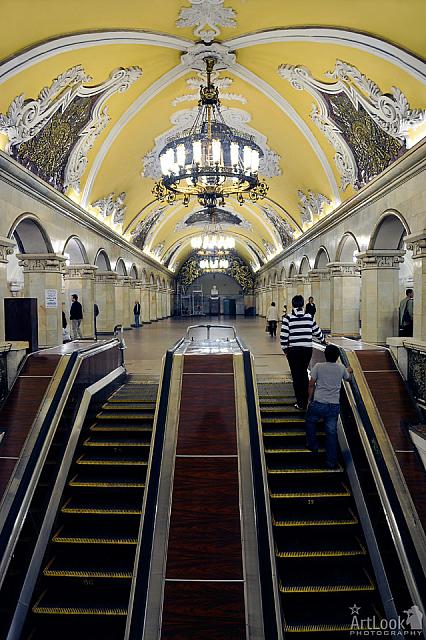
About Me in Short

My name's Arthur Lookyanov, I'm a private tour guide, personal driver and photographer in Moscow, Russia. I work in my business and run my website Moscow-Driver.com from 2002. Read more about me and my services , check out testimonials of my former business and travel clients from all over the World, hit me up on Twitter or other social websites. I hope that you will like my photos as well.
See you in Moscow!
- View full size
- Owner: Moscow Guide & Driver
- Date: June 3, 2012 06:12:00 am EDT
- File name: ALP-2012-0603-146-Entering-Moscow-Metro-Station-Komsomolskaya.jpg
- Tags: Russia , Moscow Metro , Komsomolskaya , Moscow Highlights , escalators , Moscow Famous Landmarks , underground palace , Moscow
GPS Location of the Photo
Google maps.
- GPS Map of this album
- GPS Map of Moscow Guide & Driver's pictures
Random image

Victory Park
The Memorial of the Victory in the Great Patriotic War of 1941-1945 stretches over an area of 20 hectares on the highest elevation of the Poklonnaya Gora (Low Bow Hill) in the Victory Park. This architectural ensemble built in 1983-1995 includes a museum, several sculptural monuments, an open-air display and a church.
Featured Tags
- 273 photos are tagged with architecture
- 199 photos are tagged with cathedrals
- 305 photos are tagged with churches
- 294 photos are tagged with Dear Clients
- 260 photos are tagged with lights
- 1875 photos are tagged with Moscow
- 306 photos are tagged with Moscow by Night
- 194 photos are tagged with Moscow cityscapes
- 264 photos are tagged with Moscow Kremlin
- 326 photos are tagged with night moscow
- 426 photos are tagged with Orthodox Churches
- 226 photos are tagged with Red Square
- 2538 photos are tagged with Russia
- 209 photos are tagged with twilights
- 350 photos are tagged with Winter
Take one of these exciting tours:
- Moscow Highlights
- Discovering the Golden Ring of Russia
- Arts & Culture Tours
- Moscow by Night tour



Field trip: Civil Engineering students tour CTDOT lab
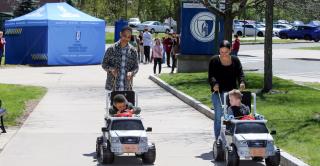
WATCH: Ready to Go Baby Go
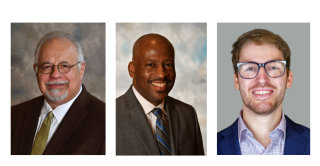
Three generations of alumni to speak at commencement
A group of Civil Engineering students and Dr. Bin Zhou recently visited the Connecticut Department of Transportation Material Evaluation and Specification Unit in Rocky Hill. Students learned about the functions of the facility and visited asphalt labs, a concrete testing lab, and an aggregate lab. The trip provided a great learning opportunity for students to connect what they learned in a classroom and what professionals are doing in the construction and maintenance of the state transportation system.
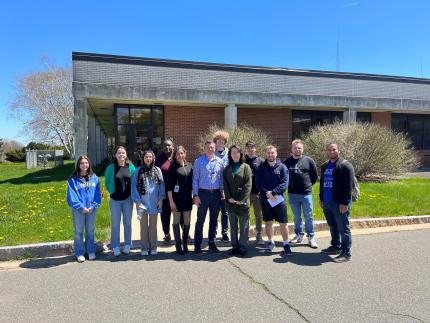
Moscow Metro Tour
- Page active

Description
Moscow metro private tours.
- 2-hour tour $87: 10 Must-See Moscow Metro stations with hotel pick-up and drop-off
- 3-hour tour $137: 20 Must-See Moscow Metro stations with Russian lunch in beautifully-decorated Metro Diner + hotel pick-up and drop off.
- Metro pass is included in the price of both tours.
Highlight of Metro Tour
- Visit 10 must-see stations of Moscow metro on 2-hr tour and 20 Metro stations on 3-hr tour, including grand Komsomolskaya station with its distinctive Baroque décor, aristocratic Mayakovskaya station with Soviet mosaics, legendary Revolution Square station with 72 bronze sculptures and more!
- Explore Museum of Moscow Metro and learn a ton of technical and historical facts;
- Listen to the secrets about the Metro-2, a secret line supposedly used by the government and KGB;
- Experience a selection of most striking features of Moscow Metro hidden from most tourists and even locals;
- Discover the underground treasure of Russian Soviet past – from mosaics to bronzes, paintings, marble arches, stained glass and even paleontological elements;
- Learn fun stories and myths about Coffee Ring, Zodiac signs of Moscow Metro and more;
- Admire Soviet-era architecture of pre- and post- World War II perious;
- Enjoy panoramic views of Sparrow Hills from Luzhniki Metro Bridge – MetroMost, the only station of Moscow Metro located over water and the highest station above ground level;
- If lucky, catch a unique «Aquarelle Train» – a wheeled picture gallery, brightly painted with images of peony, chrysanthemums, daisies, sunflowers and each car unit is unique;
- Become an expert at navigating the legendary Moscow Metro system;
- Have fun time with a very friendly local;
- + Atmospheric Metro lunch in Moscow’s the only Metro Diner (included in a 3-hr tour)
Hotel Pick-up
Metro stations:.
Komsomolskaya
Novoslobodskaya
Prospekt Mira
Belorusskaya
Mayakovskaya
Novokuznetskaya
Revolution Square
Sparrow Hills
+ for 3-hour tour
Victory Park
Slavic Boulevard
Vystavochnaya
Dostoevskaya
Elektrozavodskaya
Partizanskaya
Museum of Moscow Metro
- Drop-off at your hotel, Novodevichy Convent, Sparrow Hills or any place you wish
- + Russian lunch in Metro Diner with artistic metro-style interior for 3-hour tour
Fun facts from our Moscow Metro Tours:
From the very first days of its existence, the Moscow Metro was the object of civil defense, used as a bomb shelter, and designed as a defense for a possible attack on the Soviet Union.
At a depth of 50 to 120 meters lies the second, the coded system of Metro-2 of Moscow subway, which is equipped with everything you need, from food storage to the nuclear button.
According to some sources, the total length of Metro-2 reaches over 150 kilometers.
The Museum was opened on Sportivnaya metro station on November 6, 1967. It features the most interesting models of trains and stations.
Coffee Ring
The first scheme of Moscow Metro looked like a bunch of separate lines. Listen to a myth about Joseph Stalin and the main brown line of Moscow Metro.
Zodiac Metro
According to some astrologers, each of the 12 stops of the Moscow Ring Line corresponds to a particular sign of the zodiac and divides the city into astrological sector.
Astrologers believe that being in a particular zadiac sector of Moscow for a long time, you attract certain energy and events into your life.
Paleontological finds
Red marble walls of some of the Metro stations hide in themselves petrified inhabitants of ancient seas. Try and find some!
- Every day each car in Moscow metro passes more than 600 km, which is the distance from Moscow to St. Petersburg.
- Moscow subway system is the 5th in the intensity of use (after the subways of Beijing, Tokyo, Seoul and Shanghai).
- The interval in the movement of trains in rush hour is 90 seconds .
What you get:
- + A friend in Moscow.
- + Private & customized Moscow tour.
- + An exciting pastime, not just boring history lessons.
- + An authentic experience of local life.
- + Flexibility during the walking tour: changes can be made at any time to suit individual preferences.
- + Amazing deals for breakfast, lunch, and dinner in the very best cafes & restaurants. Discounts on weekdays (Mon-Fri).
- + A photo session amongst spectacular Moscow scenery that can be treasured for a lifetime.
- + Good value for souvenirs, taxis, and hotels.
- + Expert advice on what to do, where to go, and how to make the most of your time in Moscow.
Write your review
Copilot Workspace is GitHub’s take on AI-powered software engineering
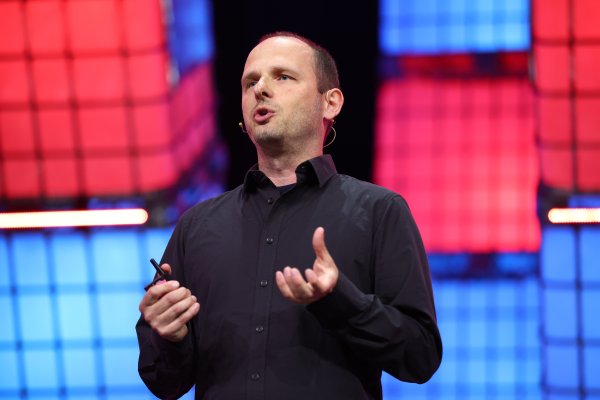
Is the future of software development an AI-powered IDE? GitHub’s floating the idea.
Ahead of its annual GitHub Universe conference in San Francisco early this fall, GitHub announced Copilot Workspace, a dev environment that taps what GitHub describes as “Copilot-powered agents” to help developers brainstorm, plan, build, test and run code in natural language.
Jonathan Carter, head of GitHub Next, GitHub’s software R&D team, pitches Workspace as somewhat of an evolution of GitHub’s AI-powered coding assistant Copilot into a more general tool, building on recently introduced capabilities like Copilot Chat , which lets developers ask questions about code in natural language.
“Through research, we found that, for many tasks, the biggest point of friction for developers was in getting started, and in particular knowing how to approach a [coding] problem, knowing which files to edit and knowing how to consider multiple solutions and their trade-offs,” Carter said. “So we wanted to build an AI assistant that could meet developers at the inception of an idea or task, reduce the activation energy needed to begin and then collaborate with them on making the necessary edits across the entire corebase.”
At last count, Copilot had over 1.8 million paying individual and 50,000 enterprise customers. But Carter envisions a far larger base, drawn in by feature expansions with broad appeal, like Workspace.
“Since developers spend a lot of their time working on [coding issues], we believe we can help empower developers every day through a ‘thought partnership’ with AI,” Carter said. “You can think of Copilot Workspace as a companion experience and dev environment that complements existing tools and workflows and enables simplifying a class of developer tasks … We believe there’s a lot of value that can be delivered in an AI-native developer environment that isn’t constrained by existing workflows.”
There’s certainly internal pressure to make Copilot profitable.
Copilot loses an average of $20 a month per user , according to a Wall Street Journal report, with some customers costing GitHub as much as $80 a month. And the number of rival services continues to grow. There’s Amazon’s CodeWhisperer , which the company made free to individual developers late last year. There are also startups, like Magic , Tabnine , Codegen and Laredo .
Given a GitHub repo or a specific bug within a repo, Workspace — underpinned by OpenAI’s GPT-4 Turbo model — can build a plan to (attempt to) squash the bug or implement a new feature, drawing on an understanding of the repo’s comments, issue replies and larger codebase. Developers get suggested code for the bug fix or new feature, along with a list of the things they need to validate and test that code, plus controls to edit, save, refactor or undo it.

Image Credits: GitHub
The suggested code can be run directly in Workspace and shared among team members via an external link. Those team members, once in Workspace, can refine and tinker with the code as they see fit.
Perhaps the most obvious way to launch Workspace is from the new “Open in Workspace” button to the left of issues and pull requests in GitHub repos. Clicking on it opens a field to describe the software engineering task to be completed in natural language, like, “Add documentation for the changes in this pull request,” which, once submitted, gets added to a list of “sessions” within the new dedicated Workspace view.
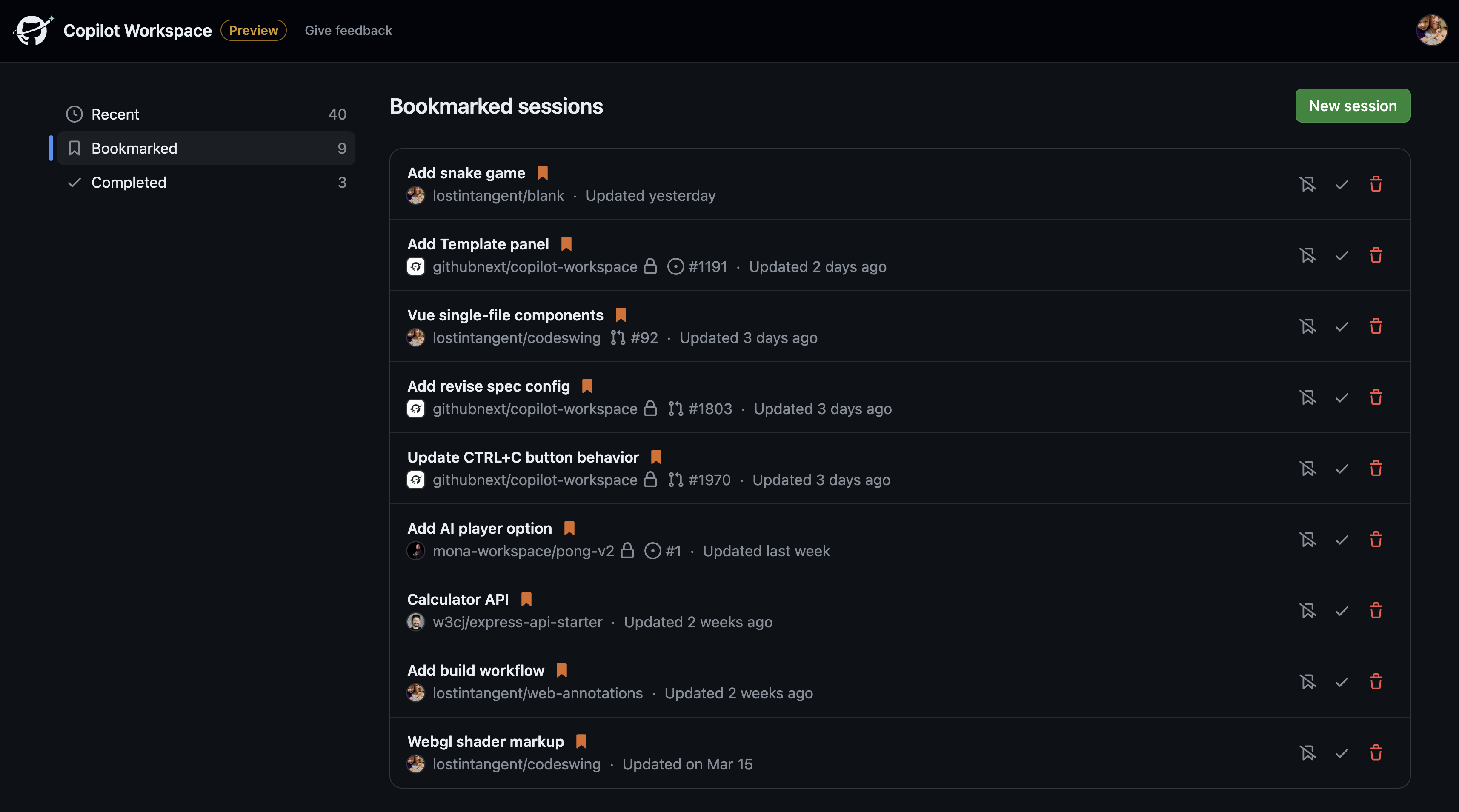
Workspace executes requests systematically step by step, creating a specification, generating a plan and then implementing that plan. Developers can dive into any of these steps to get a granular view of the suggested code and changes and delete, re-run or re-order the steps as necessary.
“If you ask any developer where they tend to get stuck with a new project, you’ll often hear them say it’s knowing where to start,” Carter said. “Copilot Workspace lifts that burden and gives developers a plan to start iterating from.”
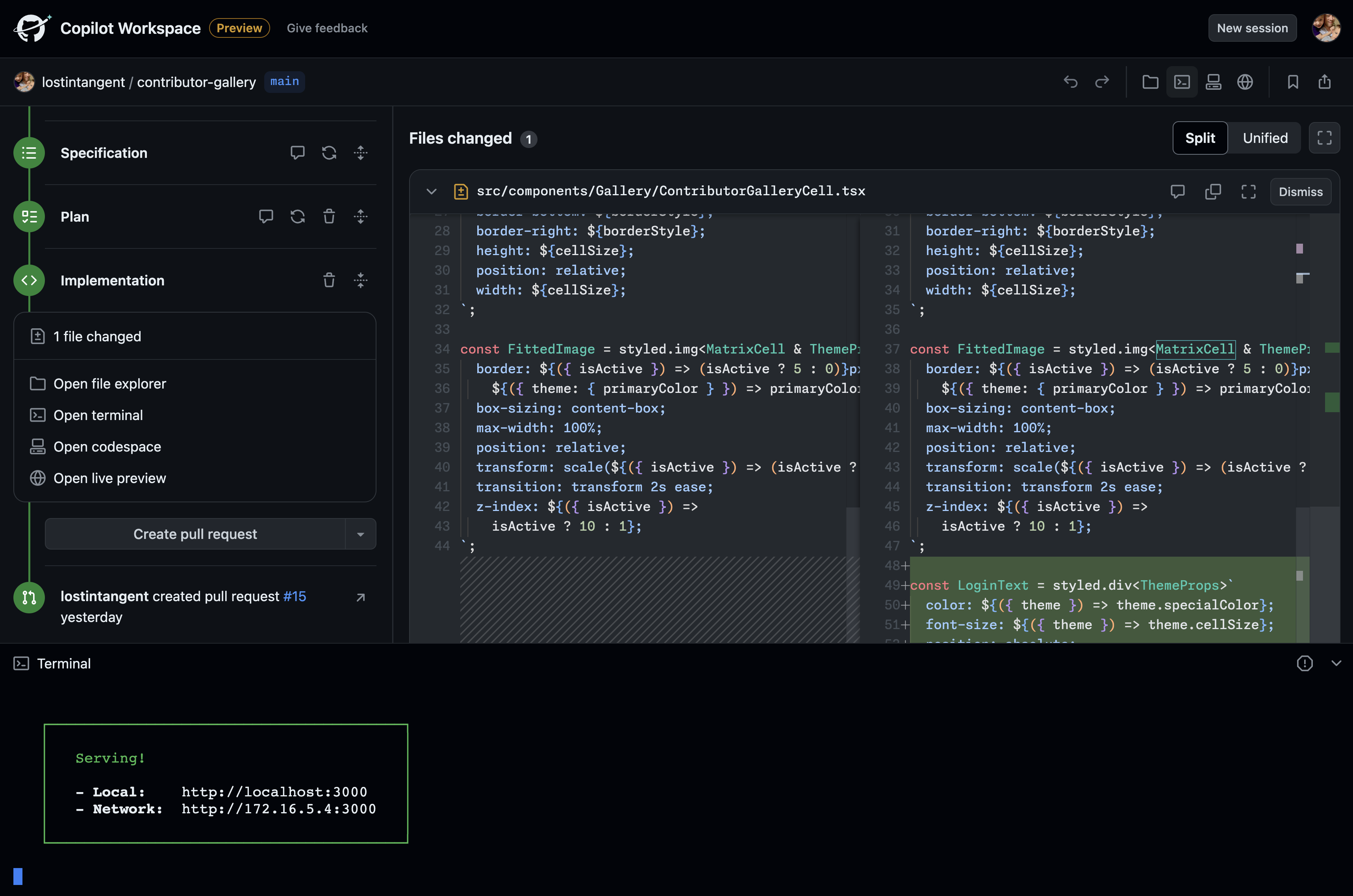
Workspace enters technical preview on Monday, optimized for a range of devices, including mobile.
Importantly, because it’s in preview, Workspace isn’t covered by GitHub’s IP indemnification policy, which promises to assist with the legal fees of customers facing third-party claims alleging that the AI-generated code they’re using infringes on IP. (Generative AI models notoriously regurgitate their training datasets, and GPT-4 Turbo was trained partly on copyrighted code.)
GitHub says that it hasn’t determined how it’s going to productize Workspace, but that it’ll use the preview to “learn more about the value it delivers and how developers use it.”
I think the more important question is: Will Workspace fix the existential issues surrounding Copilot and other AI-powered coding tools?
An analysis of over 150 million lines of code committed to project repos over the past several years by GitClear, the developer of the code analysis tool of the same name, found that Copilot was resulting in more mistaken code being pushed to codebases and more code being re-added as opposed to reused and streamlined, creating headaches for code maintainers.
Elsewhere, security researchers have warned that Copilot and similar tools can amplify existing bugs and security issues in software projects . And Stanford researchers have found that developers who accept suggestions from AI-powered coding assistants tend to produce less secure code . (GitHub stressed to me that it uses an AI-based vulnerability prevention system to try to block insecure code in addition to an optional code duplication filter to detect regurgitations of public code.)
Yet devs aren’t shying away from AI.
In a StackOverflow poll from June 2023, 44% of developers said that they use AI tools in their development process now, and 26% plan to soon. Gartner predicts that 75% of enterprise software engineers will employ AI code assistants by 2028.
By emphasizing human review, perhaps Workspace can indeed help clean up some of the mess introduced by AI-generated code. We’ll find out soon enough as Workspace makes its way into developers’ hands.
“Our primary goal with Copilot Workspace is to leverage AI to reduce complexity so developers can express their creativity and explore more freely,” Carter said. “We truly believe the combination of human plus AI is always going to be superior to one or the other alone, and that’s what we’re betting on with Copilot Workspace.”
- School of Engineering and Applied Sciences >
- News & Events >
- Upcoming Events
Upcoming Events and Seminars
All seas events, seas seminars.
Inside NASA's 5-month fight to save the Voyager 1 mission in interstellar space

After working for five months to re-establish communication with the farthest-flung human-made object in existence, NASA announced this week that the Voyager 1 probe had finally phoned home.
For the engineers and scientists who work on NASA’s longest-operating mission in space, it was a moment of joy and intense relief.
“That Saturday morning, we all came in, we’re sitting around boxes of doughnuts and waiting for the data to come back from Voyager,” said Linda Spilker, the project scientist for the Voyager 1 mission at NASA’s Jet Propulsion Laboratory in Pasadena, California. “We knew exactly what time it was going to happen, and it got really quiet and everybody just sat there and they’re looking at the screen.”
When at long last the spacecraft returned the agency’s call, Spilker said the room erupted in celebration.
“There were cheers, people raising their hands,” she said. “And a sense of relief, too — that OK, after all this hard work and going from barely being able to have a signal coming from Voyager to being in communication again, that was a tremendous relief and a great feeling.”

The problem with Voyager 1 was first detected in November . At the time, NASA said it was still in contact with the spacecraft and could see that it was receiving signals from Earth. But what was being relayed back to mission controllers — including science data and information about the health of the probe and its various systems — was garbled and unreadable.
That kicked off a monthslong push to identify what had gone wrong and try to save the Voyager 1 mission.
Spilker said she and her colleagues stayed hopeful and optimistic, but the team faced enormous challenges. For one, engineers were trying to troubleshoot a spacecraft traveling in interstellar space , more than 15 billion miles away — the ultimate long-distance call.
“With Voyager 1, it takes 22 1/2 hours to get the signal up and 22 1/2 hours to get the signal back, so we’d get the commands ready, send them up, and then like two days later, you’d get the answer if it had worked or not,” Spilker said.

The team eventually determined that the issue stemmed from one of the spacecraft’s three onboard computers. Spilker said a hardware failure, perhaps as a result of age or because it was hit by radiation, likely messed up a small section of code in the memory of the computer. The glitch meant Voyager 1 was unable to send coherent updates about its health and science observations.
NASA engineers determined that they would not be able to repair the chip where the mangled software is stored. And the bad code was also too large for Voyager 1's computer to store both it and any newly uploaded instructions. Because the technology aboard Voyager 1 dates back to the 1960s and 1970s, the computer’s memory pales in comparison to any modern smartphone. Spilker said it’s roughly equivalent to the amount of memory in an electronic car key.
The team found a workaround, however: They could divide up the code into smaller parts and store them in different areas of the computer’s memory. Then, they could reprogram the section that needed fixing while ensuring that the entire system still worked cohesively.
That was a feat, because the longevity of the Voyager mission means there are no working test beds or simulators here on Earth to test the new bits of code before they are sent to the spacecraft.
“There were three different people looking through line by line of the patch of the code we were going to send up, looking for anything that they had missed,” Spilker said. “And so it was sort of an eyes-only check of the software that we sent up.”
The hard work paid off.
NASA reported the happy development Monday, writing in a post on X : “Sounding a little more like yourself, #Voyager1.” The spacecraft’s own social media account responded , saying, “Hi, it’s me.”
So far, the team has determined that Voyager 1 is healthy and operating normally. Spilker said the probe’s scientific instruments are on and appear to be working, but it will take some time for Voyager 1 to resume sending back science data.
Voyager 1 and its twin, the Voyager 2 probe, each launched in 1977 on missions to study the outer solar system. As it sped through the cosmos, Voyager 1 flew by Jupiter and Saturn, studying the planets’ moons up close and snapping images along the way.
Voyager 2, which is 12.6 billion miles away, had close encounters with Jupiter, Saturn, Uranus and Neptune and continues to operate as normal.
In 2012, Voyager 1 ventured beyond the solar system , becoming the first human-made object to enter interstellar space, or the space between stars. Voyager 2 followed suit in 2018.
Spilker, who first began working on the Voyager missions when she graduated college in 1977, said the missions could last into the 2030s. Eventually, though, the probes will run out of power or their components will simply be too old to continue operating.
Spilker said it will be tough to finally close out the missions someday, but Voyager 1 and 2 will live on as “our silent ambassadors.”
Both probes carry time capsules with them — messages on gold-plated copper disks that are collectively known as The Golden Record . The disks contain images and sounds that represent life on Earth and humanity’s culture, including snippets of music, animal sounds, laughter and recorded greetings in different languages. The idea is for the probes to carry the messages until they are possibly found by spacefarers in the distant future.
“Maybe in 40,000 years or so, they will be getting relatively close to another star,” Spilker said, “and they could be found at that point.”
Denise Chow is a reporter for NBC News Science focused on general science and climate change.
News and views for the UB community
- Stories >
AI smartphones may help monitor chronic wounds from home
research news

Approximately 8.2 million Americans suffer from chronic wounds that stem from a multitude of conditions.
By LAURIE KAISER
Published May 1, 2024

Individuals increasingly can check on their health conditions at home. Devices that measure blood pressure, glucose and blood oxygen levels, for example, enable patients’ providers to make decisions for their care.
In the near future, patients may also be able to monitor their chronic wounds from the comfort of their homes through mobile artificial intelligence (AI) technology being developed at UB.
Wenyao Xu, professor and associate chair of the Department of Computer Science and Engineering, is leading a team that recently was awarded $3 million from the National Institutes of Health for the four-year research project, “Mobile Health Technologies for Assessing Blood Perfusion in Chronic Wounds.”
Approximately 8.2 million Americans suffer from chronic wounds that stem from a multitude of conditions, including diabetes and major surgery. This technology — accessible through a smartphone — will help streamline treatment, Xu says.
“Patients with these conditions frequently visit their health care providers or specialty wound care clinics and, in and some cases, need to be hospitalized,” Xu explains. “This can be a financial burden and a time burden to both the patient and the health care system.”
Empowering patients, regardless of income, location
While the new technology will benefit all patients, it will particularly help individuals who have barriers to transportation or who live in rural areas where wound care services are limited or unavailable, he says.
“The approach proposed in this project is innovative,” he says, “because it will explore and validate new mobile computing and data-driven techniques for wound care and blood perfusion assessment based on evidence-based truth.”
The goal is to empower patients by giving them free, usable technology they can download that will provide exact measurements on how the wound is healing — and keep them out of the hospital.
“Chronic wounds often result from poor blood flow to the affected area, which can lead to a lack of oxygen and nutrients necessary for the healing process,” Xu says. “The long-term objective of this project is to improve wound care and impact wound treatment services by developing low-cost technologies that aid with chronic wound treatment and care.”
Other UB researchers on the project are Jun Xia, professor in the Department of Biomedical Engineering; Linda M. Harris, professor of surgery and chief of UB’s Vascular Surgery Division; Saptarshi Chakraborty, assistant professor in the Department of Biostatistics; Praveen Arany, associate professor in the Department of Oral Biology; and Heamchand Subryan, director of interaction design at the Center for Inclusive Design and Environmental Access (IDEA Center). They are also working with a research team at NEC Laboratories America, based in Princeton, N.J.
“We are engaging with an industry partner early on to pave the way for mass production of this technology,” Xu notes.
Combining AI, mobile optics
The research began about five years ago, stemming from a conversation Xu had with Xia on how to advance AI and mobile optics together — mobile AI — to improve health care, Xu explains.
“We then connected with Dr. Harris, a professor of surgery at UB who has a specialty in vascular surgery,” Xu says. “This is an underexplored area for advanced mobile AI technology.”
Currently, they are collaborating with vascular clinics in the UBMD Physicians’ Group, where the team recruits patients in the technology evaluation and clinical study.
“The AI technology analyzes the mobile images and predicts if the wound is on the right track for healing,” Xu says. “If it’s not, the patients can make an appointment to see the doctor.”
First stage: fine-tuning technology
The work with the clinics is the first in a two-stage process and will focus on fine-tuning the prototype and determining what needs to be improved over the next two years. It will involve more than 200 participants in Western New York.
“We will build upon this work to enhance a commodity smartphone with a low-cost multispectral imaging sensor. An app will be available to download on users’ phones to obtain perfusion-related measures,” Xu says. “We are developing machine learning algorithms that extract the biomarkers of healing and rigorously assess the tools for usability.”
In early 2026, the team will implement the second stage: a participatory design, feedback and usability study that will include patients and human-computer interaction experts to assess and improve the technology’s usability.
The hope is that eventually anyone who is suffering from a chronic wound can access this technology, Xu says.
“This AI technology has the potential to advance the current standard of wound care for recovery after discharge from clinical therapies,” he says. “These contributions are significant because they can extend the health self-management of our society through proactive health care and real-time intervention and reduce subjective bias and financial burden for patients, their caregivers and society.”

IMAGES
VIDEO
COMMENTS
Sessions will begin at 9:00 A.M. and end around 11:30 A.M. We also encourage you to attend a university-wide UB Admissions tour. If an afternoon tour is offered on the same day as your SEAS tour, you would be able to attend both. You can find available UB Admissions tour dates and sign up online or call 1-888-UB-ADMIT (1-888-822-3648).
Welcome. Use our online tour system for any of the following: Sign up for open tours; Have us contact you when new tours are posted
On April 8, 2024, a total solar eclipse passed over Western New York and the University at Buffalo. UB community members gathered to watch the once-in-a-lifetime celestial event and members of UB's Students for the Exploration and Development of Space (SEDS) launched a weather balloon around 3 p.m., about 20 minutes before totality, to capture footage of the eclipse with a 360-degree Go-Pro ...
Find everything you need to plan your visit below, including accommodations, travel, and more to assist in preparation for your visit. ... Visit UB; Transfer to UB; Make Your Deposit; Top 10 Places To See at UB. ... 4/11/24 Engineering and Applied Sciences; 4/24/24 Jacobs School of Medicine and Biomedical Sciences; 9/27/23 Law;
An hour-and-a-half walking tour of campus. How to prepare for your visit. We request that you arrive 15 minutes before your tour and check-in at the Office of Admissions, 12 Capen Hall. UB has a large campus, and we look forward to showing you all we have to offer. Please wear comfortable walking shoes and dress for the outdoors. Directions and ...
CSEE Faculty Members, SEESL Staff, as well as authorized SEAS and UB staff frequently give tours of the SEESL facility to guests and visitors. It is important for SEESL to keep a log of the number and profile of visitors throughout the year, to coordinate the large number of requests for tours, as well as to ensure smooth and safe operations of SEESL by ensuring that tours are given by ...
Dennehy was attracted to UB by its School of Engineering and Applied Sciences and the Finish in 4 pledge, among other reasons. In more recent weeks, the tours have been filled with prospective students — high school seniors like Angelina DeBlasio of Pittsburgh, who is beginning a more traditional college search compared to the one Dennehy ...
The University at Buffalo School of Engineering and Applied Sciences, or UB Engineering, is the largest public engineering school in the state of New York and is home to eight departments. [1] Established in 1946, UB Engineering is ranked 59th by U.S. News & World Report [2] and has an annual research expenditure of $72 million.
UBEngineering is the YouTube Channel of the School of Engineering and Applied Sciences at the State University of New York at Buffalo.Connect with us on soci...
Fall Open House North Campus Tours. How to prepare for your visit. Registration is required and is limited to two guests per student. (Walk-ins will not be accommodated.) Arrive 15 minutes before your tour. Complete the Daily Health Check and show proof that you are cleared to be on campus.
Discover UB, a top public university with diverse programs, vibrant campus life and amazing opportunities. Watch our video tour and get ready to apply.
Koret Visitor Center. 2227 Piedmont Ave. Goldman Plaza, California Memorial Stadium. Berkeley, CA 94720. (510) 642-5215. You simply won't find a more vibrant, diverse, high-energy campus than Berkeley. Come experience it for yourself. We'd love to show you around.
Feel the world-changing energy of over 35,000 students from around the world. We offer a variety of tours to help you explore the Berkeley campus, from family tours to large groups to self-guided options. We offer Spanish and Mandarin language tours on request with 14 days notice. Choose a link to the left for more information.
The School of Engineering and Applied Sciences hosts morning information sessions and tours for prospective undergraduates on select dates throughout the year. Each program includes a brief presentation by one of our academic advisors describing available academic programs, popular experiential learning and academic support options, and admissions information.
Buy UB40 - Red Red Wine Tour tickets at the Greek Theatre in Los Angeles, CA for Jul 31, 2024 at Ticketmaster.
Moscow has some of the most well-decorated metro stations in the world but visitors don't always know which are the best to see. This guided tour takes you to the city's most opulent stations, decorated in styles ranging from neoclassicism to art deco and featuring chandeliers and frescoes, and also provides a history of (and guidance on how to use) the Moscow metro system.
Private Sightseeing Tours in Moscow: Check out 6 reviews and photos of Viator's Private Moscow Metro Tour
UB TCIE clean energy courses ranked in top 10; News. Shared Facilities and Equipment. 6/28/22 BioDesign Core Facility; 7/8/21 Cleanroom; ... TCIE aims to improve the enterprise performance of organizations, serving as the business outreach arm of the School of Engineering and Applied Sciences. The center is committed to professional and ...
In fact, Komsomolskaya-Ring marks the height of the Stalinist Empire style in the Moscow Metro. The station design was awarded a grand prix at the International Exhibition in Brussels in 1958. Photo #146 taken on June 03, 2012 during Moscow Metro tour with my Dear client from USA, Brandon Pelsmaeker.
A group of Civil Engineering students and Dr. Bin Zhou recently visited the Connecticut Department of Transportation Material Evaluation and Specification Unit in Rocky Hill. Students learned about the functions of the facility and visited asphalt labs, a concrete testing lab, and an aggregate lab.
It is an exciting time to be a part of the School of Engineering and Applied Sciences! We are experiencing unprecedented growth in all areas, making it hard to keep up the pace! Our faculty has grown to over 275, and we have over 7,500 students across our nine departments. Our research portfolio continues to grow at record pace, and now totals ...
Moscow Metro private tours. 2-hour tour $87: 10 Must-See Moscow Metro stations with hotel pick-up and drop-off. 3-hour tour $137: 20 Must-See Moscow Metro stations with Russian lunch in beautifully-decorated Metro Diner + hotel pick-up and drop off. Metro pass is included in the price of both tours.
Students and faculty in the College of Engineering, Architecture and Technology showed Lankford the EXCELSIOR lab, where students conduct drone research with significant national security implications. ... "Sen. Lankford's visit to our innovation park highlights our collaborative efforts with the federal delegation of Oklahoma, providing an ...
TCIE aims to improve the enterprise performance of organizations, serving as the business outreach arm of the School of Engineering and Applied Sciences. The center is committed to professional and continuing education that is focused on workforce development and operational excellence. ... 4/30/24 UB recognizes 2024 SLICE winners; 4/29/24 ...
GitHub's new Copilot Workspace brings AI-powered assistive software engineering tools front and center.
Upcoming events and seminars in the School of Engineering and Applied Sciences at the University at Buffalo. ... (UB) The State University of New York. University at Buffalo (UB) School of Engineering and Applied Sciences . Apply Now . Toggle Navigation Menu. Top Choices Full Menu. 9/14/23 Our School. 3/31/23 Academics. 4/19/24 Research & Faculty.
After months of trying to reestablish communication with the Voyager 1 probe — the most distant human-made object in existence — NASA finally announced success.
Other UB researchers on the project are Jun Xia, professor in the Department of Biomedical Engineering; Linda M. Harris, professor of surgery and chief of UB's Vascular Surgery Division; Saptarshi Chakraborty, assistant professor in the Department of Biostatistics; Praveen Arany, associate professor in the Department of Oral Biology; and ...